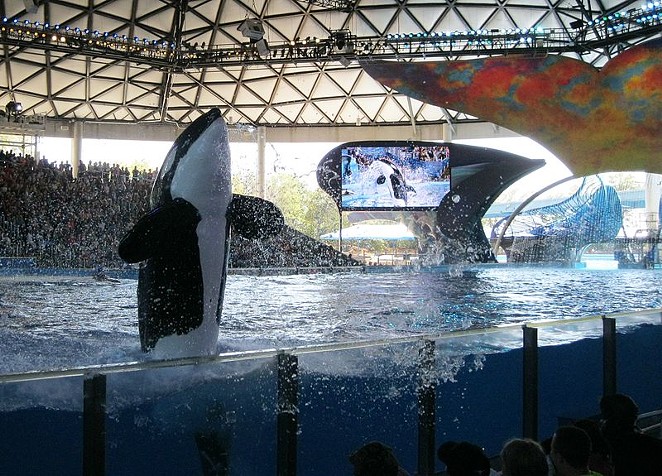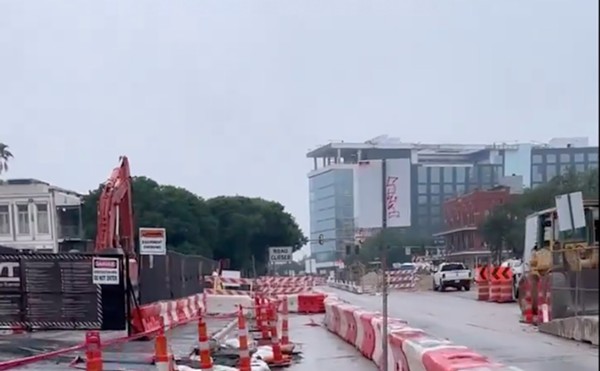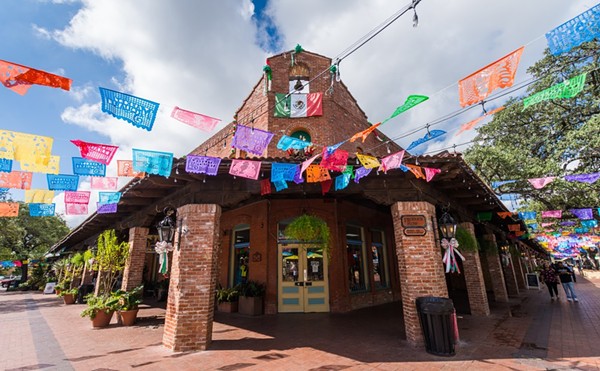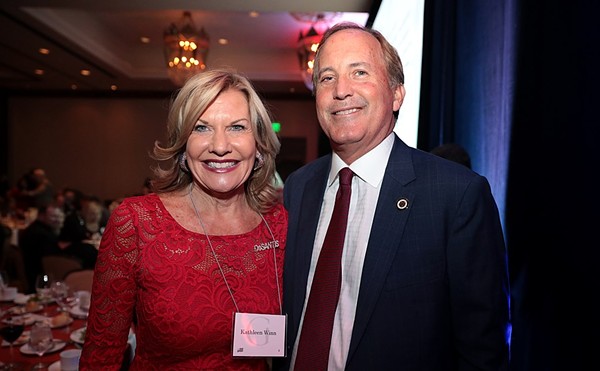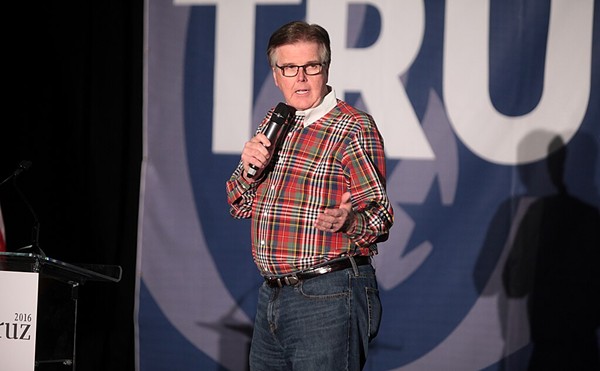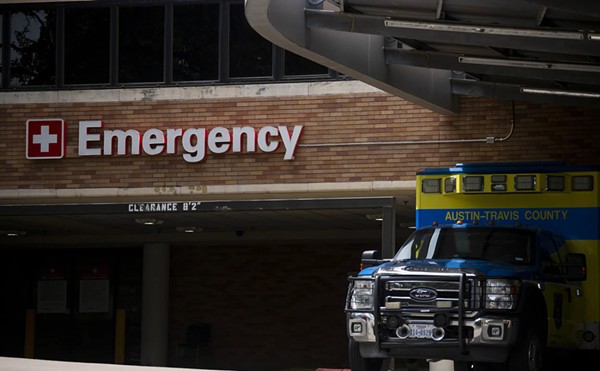Great Moments in Magical Thinking: ‘Bigger Than HemisFair’
By Heywood Sanders on Wed, Sep 11, 2019 at 9:11 am
Editor’s Note: The following is CityScrapes, a column of opinion and analysis.
“This is bigger than anything you could imagine,” then-mayor Henry Cisneros crowed in early January 1985. “It’s bigger than HemisFair and represents a major decision for our city.”
Cisneros was making the grand announcement that Sea World would build a big new park in San Antonio. And with Texas Gov. Mark White and an array of civic and political leaders in attendance, Sea World chief William Jovanovich, chairman of Harcourt Brace Jovanovich Inc., attributed the choice of San Antonio primarily to Cisneros: “He’s a helluva salesman. He closed the deal without even asking us.”
On that January day, the promise of the new aquatic theme park was breathtaking. Jovanovich promised the attraction would be open year-round, drawing 3 million annual visitors. That forecast number would put the new Sea World park at No. 4 in the nation in terms of attendance, “behind Disney World, Disneyland and Knott’s Berry Farm,” according to the Express-News.
And when the new park opened in spring 1988, the enthusiasm was no less, with Sea World of Texas chief George Becker reinforcing the 3 million annual attendance estimate and touting the $10 million the park had already spent on marketing. Indeed, when Becker addressed St. Mary’s University students that November, he offered the judgment that San Antonio and South Texas could rival Southern California and Central Florida as a “world-class destination point.”
Both Becker and Jovanovich often contended that there was no feasibility study for the San Antonio Sea World — that Henry Cisneros’ salesmanship and their belief in Texas and the city had been enough to commit to the project. But, in fact, there had been a feasibility analysis commissioned prior to the 1985 announcement. Harrison “Buzz” Price, who had done the market analysis for both Disneyland and Disney World and was the most respected consultant in the industry, had been hired by Sea World executive Frank Powell to do a “preliminary appraisal” of the San Antonio park plan.
Price’s report, dated January 2, 1985 — days before the official announcement of the new Sea World — offered a starkly different forecast about the planned San Antonio park than Jovanovich’s. Price noted that both the San Diego and Orlando parks relied on the immediate area — within 50 miles — for much of their business: 22% for Orlando, where the Disney attractions were a major national draw, and 43% for San Diego. Based on those figures and San Antonio’s size, Price estimated first year attendance for a San Antonio Sea World at 1.25 million.
As Price would later put it, “I think Mr. Jovanovich took my numbers as a personal affront.” So Jovanovich fired both Frank Powell, who had hired Price, and Powell’s boss, Robert Hillebrecht. Jovanovich would run Sea World by himself.
Boosted by the $10 million marketing blitz, Sea World racked up first-year attendance of 2.87 million. The second year attendance dropped to 2.3 million. The next year, 1990, it only pulled in 1.68 million attendees. Sea World’s initial success was the result of “papering the market,” offering season pass deals and discounts.
In 1989, all of the Sea World parks were sold to St. Louis brewer Anheuser-Busch.
As for the promise of ranking fourth in attendance, the 2018 Index report of the Themed Entertainment Association lists the top 20 amusement and theme parks in North America. The list is topped by Disney’s Magic Kingdom in Orlando, with 20.8 million attendees. Disneyland in Anaheim is second at almost 19 million.
The top Sea World park, in Orlando, ranked sixth with 4.6 million attendees. And San Diego’s Sea World came in at No. 14. Hersheypark in Pennsylvania and Six Flags Great America outside Chicago ranked 19th and 20th, with attendance of just over 3 million each.
San Antonio’s Sea World didn’t make the list.
Our city’s leadership has long looked outside for economic salvation, expecting that some grand project — the Alamodome, perhaps, or a San Antonio River canal to the Gulf or a train to Austin — or outside force will bring prosperity and economic advance. That kind of magical thinking is enticing, as it relieves us of the need to seriously deal in what will actually improve this community, and what that will cost.
The reality is that in 2019, just as in 1989, Disney isn’t going to come. We’re not going to be the next Orlando. We have to set about fixing and building a viable, inclusive, sustainable community on our own. Now.
Heywood Sanders is a professor of public policy at the University of Texas at San Antonio.
Stay on top of San Antonio news and views. Sign up for our Weekly Headlines Newsletter.
“This is bigger than anything you could imagine,” then-mayor Henry Cisneros crowed in early January 1985. “It’s bigger than HemisFair and represents a major decision for our city.”
Cisneros was making the grand announcement that Sea World would build a big new park in San Antonio. And with Texas Gov. Mark White and an array of civic and political leaders in attendance, Sea World chief William Jovanovich, chairman of Harcourt Brace Jovanovich Inc., attributed the choice of San Antonio primarily to Cisneros: “He’s a helluva salesman. He closed the deal without even asking us.”
On that January day, the promise of the new aquatic theme park was breathtaking. Jovanovich promised the attraction would be open year-round, drawing 3 million annual visitors. That forecast number would put the new Sea World park at No. 4 in the nation in terms of attendance, “behind Disney World, Disneyland and Knott’s Berry Farm,” according to the Express-News.
And when the new park opened in spring 1988, the enthusiasm was no less, with Sea World of Texas chief George Becker reinforcing the 3 million annual attendance estimate and touting the $10 million the park had already spent on marketing. Indeed, when Becker addressed St. Mary’s University students that November, he offered the judgment that San Antonio and South Texas could rival Southern California and Central Florida as a “world-class destination point.”
Both Becker and Jovanovich often contended that there was no feasibility study for the San Antonio Sea World — that Henry Cisneros’ salesmanship and their belief in Texas and the city had been enough to commit to the project. But, in fact, there had been a feasibility analysis commissioned prior to the 1985 announcement. Harrison “Buzz” Price, who had done the market analysis for both Disneyland and Disney World and was the most respected consultant in the industry, had been hired by Sea World executive Frank Powell to do a “preliminary appraisal” of the San Antonio park plan.
Price’s report, dated January 2, 1985 — days before the official announcement of the new Sea World — offered a starkly different forecast about the planned San Antonio park than Jovanovich’s. Price noted that both the San Diego and Orlando parks relied on the immediate area — within 50 miles — for much of their business: 22% for Orlando, where the Disney attractions were a major national draw, and 43% for San Diego. Based on those figures and San Antonio’s size, Price estimated first year attendance for a San Antonio Sea World at 1.25 million.
As Price would later put it, “I think Mr. Jovanovich took my numbers as a personal affront.” So Jovanovich fired both Frank Powell, who had hired Price, and Powell’s boss, Robert Hillebrecht. Jovanovich would run Sea World by himself.
Boosted by the $10 million marketing blitz, Sea World racked up first-year attendance of 2.87 million. The second year attendance dropped to 2.3 million. The next year, 1990, it only pulled in 1.68 million attendees. Sea World’s initial success was the result of “papering the market,” offering season pass deals and discounts.
In 1989, all of the Sea World parks were sold to St. Louis brewer Anheuser-Busch.
As for the promise of ranking fourth in attendance, the 2018 Index report of the Themed Entertainment Association lists the top 20 amusement and theme parks in North America. The list is topped by Disney’s Magic Kingdom in Orlando, with 20.8 million attendees. Disneyland in Anaheim is second at almost 19 million.
The top Sea World park, in Orlando, ranked sixth with 4.6 million attendees. And San Diego’s Sea World came in at No. 14. Hersheypark in Pennsylvania and Six Flags Great America outside Chicago ranked 19th and 20th, with attendance of just over 3 million each.
San Antonio’s Sea World didn’t make the list.
Our city’s leadership has long looked outside for economic salvation, expecting that some grand project — the Alamodome, perhaps, or a San Antonio River canal to the Gulf or a train to Austin — or outside force will bring prosperity and economic advance. That kind of magical thinking is enticing, as it relieves us of the need to seriously deal in what will actually improve this community, and what that will cost.
The reality is that in 2019, just as in 1989, Disney isn’t going to come. We’re not going to be the next Orlando. We have to set about fixing and building a viable, inclusive, sustainable community on our own. Now.
Heywood Sanders is a professor of public policy at the University of Texas at San Antonio.
Stay on top of San Antonio news and views. Sign up for our Weekly Headlines Newsletter.
Tags:

KEEP SA CURRENT!
Since 1986, the SA Current has served as the free, independent voice of San Antonio, and we want to keep it that way.
Becoming an SA Current Supporter for as little as $5 a month allows us to continue offering readers access to our coverage of local news, food, nightlife, events, and culture with no paywalls.
Scroll to read more San Antonio News articles
Newsletters
Join SA Current Newsletters
Subscribe now to get the latest news delivered right to your inbox.

